|
My family and I drove to the house of some relatives in in the town of Nashville, located in Brown County, Indiana, to watch this year’s solar eclipse. The town was humming with preparations for the event, and local vendors had eclipse-themed sales and promotions which they were offering to locals and visitors, along with eclipse-related humor. We planned to watch the eclipse from our relative’s house, and we brought our eclipse glasses along with eclipse filters for our iPhones. At the expected time, the disk of the sun began to be covered by the moon to a progressively greater extent. There were some clouds, but they were thankfully very high in the atmosphere and did not obstruct our view of the sun significantly. At one point we tried the pinhole camera trick to see an image of the sun using a colander. As the moon covered an increasing area of the sun, it got cooler, and there was a noticeable decrease in the amount of sunlight around us. We noticed a reduction in the amount of bird songs coming from the woods, but we heard a new bird singing, the mourning dove. These birds only sing towards dawn and dusk. However, it didn’t feel like dusk. Even with most of the sun covered, it still shone brightly. And then it suddenly happened: totality! We were able to take off our eclipse glasses and look directly at the sun which looked like an annulus with a black center and a bright circumference. The horizon all around us bore an orange and yellowish tinge like a sunset or a sunrise. My relatives, who were sitting out closer to the trees (I was up on the deck), reported that they saw insects that normally only come out at night. In the distance, we heard some loud explosions. Somebody had the original idea of taking advantage of the eclipse to set off fireworks! We saw what appeared like a bright star visible close to the tip of the tree branches to our right. One of my relatives checked with the astronomical app and confirmed it was the planet Venus, which, if it were not for the eclipse, would not have been visible. And then, just as abruptly as it had arrived, the darkness went away. The insects disappeared, and the birds resumed singing. In the next hour the moon moved across the sun in the opposite direction. The 2024 eclipse was a festive event where millions of people marveled at the natural phenomenon. With a few exceptions, no one thought the eclipse was an bad omen or a an warning from God. But the reaction of people towards eclipses has not always been like this. The explanations that ancient cultures had for eclipses were rooted in superstition. Many such explanations involved the notion that some entities ranging from dragons or demons to actual animals were obscuring or biting the sun, while others equated the event with the antics of some mythological characters or with the actual sun exhibiting this behavior for one reason or another. Not surprisingly, eclipses often inspired fear in both the populace and their rulers with both engaging in rituals to ward off any dire consequences. In the most extreme cases, people were actually killed during or as a result of eclipses. And all this happened because of fear. In my book, The Gift of Science, I quoted the horror writer H. P. Lovecraft who wrote that one of the strongest emotions of humankind is fear, and that one of the strongest fears is the fear of the unknown. This type of fear is the begetter of some of the most barbaric behaviors that humanity has exhibited through history. But today we have science, and science allows us to know. We now know that an eclipse is just the moon moving across the sun and projecting a shadow on the Earth. If someone argues that the eclipse is a sign from God telling us to change our behavior, we can reply that we can predict when and where the eclipse will happen to the nearest minute and to the nearest mile. What kind of sign is that? The eclipse will happen even if we do change our behavior. And if we all change our behavior before the eclipse, after the eclipse happens another person can argue that it was a sign of God telling us that we should change our behavior to the way it was before the eclipse! Unfortunately, there are millions of people who accept the science behind eclipses but deny the science behind things such as climate change, vaccines, evolution, and even the roundness of the Earth! And while the scientific disciplines that deal with these things are different, they all use the same method (the scientific method) to discover the truth about the behavior of matter and energy in the world around us. Observations, experiments, measurements, testing of hypotheses, elaboration of theories, making predictions and testing them, refining theories, putting together an increasingly complete description of reality – this is what ALL science is about. The scientific method has allowed us to understand eclipses, climate, the immune system, the origin of species, and the curvature of the Earth. You can’t accept what one group of scientists has discovered using this method while denigrating and delegitimizing what other scientists have discovered using the same method! When we planned our trip to see the eclipse and marveled at its occurrence, we benefited from hundreds of years of research carried out by thousands of scientists. Let’s not allow ourselves to be swayed by ignorance, misinformation, and conspiracies. Let’s benefit from the work that ALL scientists have performed. The photos belong to the author and cannot be used without permission.
0 Comments
I have written before about fear, which is one of the strongest emotions humans experience. Fear can be a useful emotion that prevents us from doing things that may hurt us or place us in danger. However, excessive fear can have a detrimental effect on our lives by producing an incapacitating anxiety or even panic which can significantly interfere with everyday life and cause health problems. There are specific fears called “phobias” that involve an irrational fear of a specific object or situation. These phobias may be caused by a bad experience, which normally occurs during childhood, or they may have genetic origins. Those who experience these fears recognize their nature and tend to avoid the object or situation that triggers the phobia. The lifetime worldwide prevalence of these phobias is very variable affecting anywhere from 1.5% to 15% of the population. Phobias tend to affect women more than men, and they tend to begin in childhood and decline thereafter with peaks during midlife and old age. Human phobias run the gamut from the slight to the severe and from the common to the truly rare, and they can affect people ranging from average persons to celebrities. In this post we will take a look at some specific fears that people have. 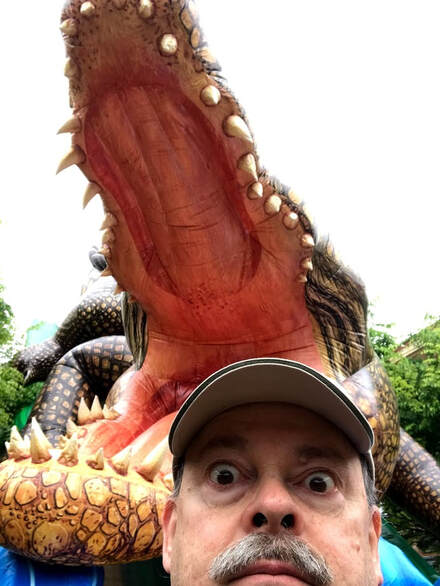 Aligatoraphobia Aligatoraphobia The most common phobias involve animals, and they are in general called zoophobias. I once knew a kid who would scream and run away from large dogs. He had a type of cynophobia, which is the fear of dogs (the fear of cats is ailurophobia). The actress Kristen Stewart has a fear of horses (equinophobia), which she had to overcome to film a movie that involved a lot of horseback riding. There are people who are afraid of alligators (aligatoraphobia). This is a specific case of herpetophobia or fear of lizards and snakes. The country singer and songwriter Johnny Cash was afraid of snakes (ophidiophobia). But the object of the fear doesn’t have to be a large scary creature. I knew of a person that was so terrified of frogs that she would faint in their presence. This person had ranidaphobia, which is a specific case of the broader batrachophobia, or fear of amphibians. The feared animal can in fact be something much smaller such as an insect (entomophobia). The singer Justin Timberlake is afraid of spiders (arachnophobia) and the actress Nicole Kidman is afraid of butterflies (lepidopterophobia). Other common fears are phobias such as fear of heights (acrophobia). A related phobia is fear of flying (aviophobia). I knew a person who could only board a plane under heavy sedation, as that was the only way this person could tolerate flying. The great science fiction writer Isaac Asimov who wrote about flying to the stars had both acrophobia and aviophobia, and he would only travel by vehicle, train, or ship. There are people who are afraid of thunder and lightning (astraphobia), of tight or crowded spaces (claustrophobia), of blood (hemophobia) and even of water (aquaphobia). People with aquaphobia can drink water but they are afraid of larger amounts of water as in oceans, lakes, pools, and even bathtubs. Aquaphobia should not be confused with hydrophobia which is a symptom of the late stages of the disease, rabies. A common and sad phobia is the fear of being alone (autophobia), which can lead people into bad relationships just to avoid being single. Another common phobia is the fear of driving which is known by several names (amaxophobia, ochophobia, motorphobia, or hamaxophobia). This phobia is often combined with other phobias such as dystychiphobia (fear of accidents), hodophobia (fear of travel), or capiophobia (fear of getting arrested). There are other phobias that are less common, but still affect a significant number of people. I once knew of a war veteran who could not stand celebrations involving fireworks. He suffered from ekrixiphobia, the fear of explosions. People who are afraid of getting cancer have carcinophobia. This is a specific case of the more general nosophobia, which is the fear of developing a disease. People who are pathologically afraid of germs have (mysophobia). The fear of suffering an amputation and of being around amputees is called (apotemnophobia). And as you would expect, the area of sexuality is rife with its own array of phobias that fall under the general fear of sex (genophobia) denomination. Finally, there are rare phobias some of which may seem truly bizarre. The fear of belly buttons is omphalophobia. The fear of objects inside one’s house is oikophobia. The fear of peanut butter sticking to the roof of your mouth is arachibutyrophobia. The fear of the color yellow is xanthophobia. The fear of mothers-in-law is pentheraphobia. The fear of being afraid is phobophobia. The fear of money is chrometophobia or chrematophobia. The fear of happiness is cherophobia. Perhaps the most ironic of all phobias is, hippopotomonstrosesquippedaliophobia, which is the fear of long words! Some people, such as the film director Woody Allen, have so many phobias, that they are said to have panophobia, which is the fear of everything. Some of the above phobias may seem risible, and in fact very specific phobias have been often the subject of ridicule. The British program The Sketch Show parodied phobias in its Phobia Workshop sketch shown in the video below. We may be tempted to dismiss some of these rarer phobias as the absurd quirks of eccentric people with too much time on their hands, but if these phobias are severe enough and the stimulus that triggers them is hard to avoid, they can be a source of shame and anxiety that disrupts the life of the individuals afflicted with them and isolates them from society. Phobias can be treated in several ways. One of them is graded exposure to the trigger of the phobia (exposure therapy) in a controlled environment which nowadays may also involve the use of virtual reality technology. Another treatment is cognitive behavioral therapy which focuses on changing the thoughts and beliefs people have about their phobias. In the more extreme cases, medications such as antidepressants and anxiolytics may be necessary. The photograph is property of the author and can only be used with permission. We are now in the midst of pandemic of a coronavirus disease called COVID-19 caused by a virus called “severe acute respiratory syndrome coronavirus 2” (SARS-CoV-2), and there is some anxiety regarding certain unknown aspects of this virus. For example, the death rates appear significantly higher than those of the regular flu (note however that COVID-19 is not a flu or even related to the flu), but there is uncertainty as to whether this is due to an underreporting of milder non-lethal cases. However, the majority of deaths seem to occur among older weak people with previous health problems, and infected people that do not yet have symptoms upon viral infection do not seem to be a major driver behind the spread of the virus. Will COVID-19 turn out to be a disease no more serious than the flu, or will it be much worse? In a previous post I quoted the late horror writer, H. P. Lovecraft, who wrote that “The oldest and strongest emotion of mankind is fear, and the oldest and strongest kind of fear is fear of the unknown.” But even as we remain somewhat fearful about what we don’t know regarding COVID-19, we must remember not only what we do know about diseases today and the fact that we have the tools fight them, but also how little we knew about them in the past and how helpless we were. Let’s start with the Black Death. The Bubonic Plague or Black Death ravaged many areas of the world in antiquity. The disease is caused by a bacillus, Yersinia pestis, which infects rats (although other animal hosts are also common) and is then transmitted to humans by fleas that bite infected rats. The most famous outbreak of the plague was that which occurred in Europe from 1347 to 1351 and which wiped out an estimated two thirds of the continent’s population (about 50 million people). Poor public hygiene and crowded living conditions in Europe created an excellent environment for the spread of disease. The role of germs or insects in the causation of disease was unknown, and physicians were helpless against the onslaught of the disease which was blamed on several things ranging from foul air and unfavorable planetary alignments to divine punishment for sins. Today it is difficult to comprehend the sheer level of terror triggered by the plague in Europe and the breakdown of society and institutions that it caused. Corpses accumulated in the streets. Family members abandoned their dead and dying. Government officials, doctors, and priests deserted their posts. In some cities up to 80% of the population was wiped out. Some rulers instituted draconian measures like boarding up houses with all the occupants inside if one person in the house was infected, thus condemning all those inside to die. Ignorance, superstition, and fear combined to trigger barbaric behavior in mobs of people that targeted and killed individuals or certain groups of people like gypsies or Jews who were rumored to be behind the causation of the plague. Several plague pandemics ravaged Europe over hundreds of years causing the death of millions. It was only in 1894 that the Swiss-French physician, Alexandre Yersin, discovered the plague bacillus and the role of rodents in its spread, and in 1898 the French physician Paul-Louis Simond discovered the role of fleas in the transmission process. This allowed the implementation of effective public hygiene measures that finally controlled the disease. Now let’s move on to the so called Spanish Flu. From 1918 to 1919 an influenza pandemic called the Spanish Flu killed 50 million people in the world and 500,000 in the United States. Due to World War I, any news about the flu that could be used as propaganda by the enemy was censored in many countries including the US, but the general public could tell that something out of the ordinary was going on. Unlike previous flu infections, this strain of influenza mostly affected and killed people in the prime of their life (20 - 40 years old), and it quickly overwhelmed the health care system in many localities which had to resort to interring the dead in mass graves. There was no way to treat influenza or the deadly secondary infections it generated, so fighting the disease consisted on mostly preventive measures such as good hygiene, quarantine, closing venues where large numbers of people congregated, and supportive care for those infected. The fear of the times of the plague returned. Scores of people locked themselves in their houses, refused to help their neighbors, and refused to go to work emptying the streets of some cities and towns. The causative agent of the flu was originally believed to be a very small bacterium, but the development of the field of virology eventually led to the understanding that the flu is caused by viruses. With the invention of the electron microscope in the 1930s, viruses like the ones that cause the flu could be visualized. In 1999 the Spanish Flu virus was recovered from people who died during the pandemic. The virus was reconstructed in 2005 and studied to figure out what made it so virulent. So how do the last two pandemics compare to the COVID-19 pandemic today?  SARS-CoV-2 virus particle which produces the disease COVID 19 SARS-CoV-2 virus particle which produces the disease COVID 19 Unlike what happened with the Black Death or the Spanish Flu, we know exactly what COVID-19 is. We know what the virus looks like, and what it does and how it does it. We have a good idea of where it originated and how. We have sequenced its genome in record time, and used that information to make test kits that permit the identification of those people that are infected, so they can be quarantined and questioned about their contacts and the places they have been. We have antibiotics to treat secondary infections triggered by the virus. We are testing antivirals that may be of use against the virus, and we have also begun to develop vaccines. There is a vast worldwide network of organizations such as the Global Virus Network and the World Health Organization that are tracking the spread of COVID-19 and coordinating the sharing of information among experts in different disciplines at every level and informing the public. There are government agencies such as the Centers for Disease Control and Prevention (CDC) in the U.S. that are monitoring the individual cases in a given country, coordinating the public health response, and advising the government and the general population. Humanity’s knowledge of disease and its response to it has come a long way since the times of the Black Death and the Spanish Flu. We will continue fearing the unknown, but thanks to science this “unknown” has been made much smaller. Today we fear less. The painting of Marseille during the Great Plague by Michel Serre is in the public domain. The photograph of an emergency hospital during influenza epidemic in Camp Funston, Kansas, circa 1918 is from the National Museum of Health and Medicine, and is used here under an Attribution 2.0 Generic (CC BY 2.0) license. The transmission electron micrograph of a SARS-CoV-2 virus particle (that produces the disease COVID-19), isolated from a patient, was captured and color-enhanced at the National Institute of Allergy and Infectious Diseases (NIAID) Integrated Research Facility (IRF) in Fort Detrick, Maryland, and is used here under an Attribution 2.0 Generic (CC BY 2.0) license. 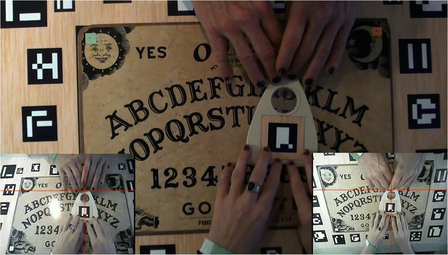 Using the Ouija Board Using the Ouija Board Human beings have used devices such as pendulums or dowsing rods for the purposes of divination for hundreds of years. By comparison the Ouija board is a late comer to this assortment of divination devices. In the United States, the businessman, Elijah Bond, patented the first Ouija Board, and his company, Kennard Novelty Company, began selling it in 1890. The generic Ouija board is a flat board with the letters of the alphabet, the numbers from 0 to 9, and the words “yes’ and “no” inscribed upon it. Upon this board a smaller board (planchette) is placed. The players place their fingertips on the planchette and ask questions. The planchette then moves and points to letters, numbers, “yes” or “no” to answer the questions. The people using the Ouija board claim that they do not move the planchette, and interpret the movement to be a product of entities such as “spirits” or “forces”. The Ouija board became very popular in the United States. Initially it was marketed as a parlor game, but it quickly began to be associated with the spiritualist movement whose members employed the board to contact spirits. Soon everyone was using the Ouija from socialites and writers, to crime solvers and gamblers. The board even made it to episodes of popular sitcoms like I Love Lucy and Bewitched, and in its heyday outsold other iconic games like Monopoly. During this time the Ouija board was considered at most a harmless pastime until Hollywood decided to demonize it. The first movie that posited that the Ouija board could serve as a tool for demonic possession was The Exorcist, in 1973. From then on, a string of movies have employed the trope of the Ouija board as a conduit for evil, and the Ouija board has been condemned by Christian organizations. 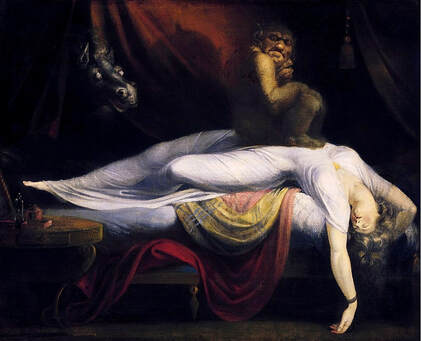 Demonic Possession Demonic Possession Ouija boards and other divining devices such as pendulums and dowsing rods work based on a well-studied psychological effect called the “ideomotor effect”. This is a dissociative state: a situation where movement becomes dissociated from consciousness. The planchette in the Ouija board is unconsciously moved by the person(s) touching it. The effect is so realistic that many people operating the Ouija board swear that they are not moving the planchette at all, but rather that they merely allow their hands to be carried by its movements. If susceptible individuals operating the Ouija board believe that the planchette is indeed moved by spirits, and that the board is a gateway to the occult, this can have a powerful suggestive effect on the operators who, in some cases, have experienced an array of symptoms that can include trance states, convulsions, or hallucinations. Depending on the cultural background of the people involved, this can be interpreted as demonic possession. However, in none of these cases has anything supernatural been proven to occur. People convulsing and making weird noises can create quite an impression on others, but their behavior has always been found to be within the realm of the possible. Individuals operating Ouija boards do not gain access to information that they would otherwise not know or not be able to figure out by themselves. If people try to operate the Ouija board blindfolded, the movement effect persists, but the answer to questions becomes nonsensical. Episodes where dozens to hundreds of people ended up acting out directly or indirectly as a result of using divination games like the Ouija have been the result of hysteria, or what is called nowadays “conversion disorder”. This is a disorder where the emotional problems, stresses, and anxieties of individuals are expressed in the form of physical symptoms. Scientists have simply not found any evidence that Ouija boards or other divination devices work, or that they are in any way related to anything supernatural. Nevertheless, the general recommendation is that anxious individuals prone to emotional or neurological problems should not use these devices. However, I believe the real danger regarding things like Ouija boards and demonic possession lies in accepting them as real. Back in 1691 in the town of Salem in Massachusetts a group of girls started exhibiting strange behaviors including altered speech, convulsions, and trance-like states. The local physician examined the girls and concluded that they were victims of witchcraft. The town’s government accepted this diagnosis and asked the girls to name their tormentors, whom they proceeded to jail and try in court for witchcraft. Salem spiraled into madness as the girls’ accusations placed hundreds of innocent people in jail with 20 of them being led to the gallows. I recently visited Salem and went to a memorial dedicated to those executed during the Salem witch trials. The names of these people are engraved into stone slabs in the memorial. They represent an unsettling testament to what can happen when fear and hysteria leads to the uncritical acceptance of questionable beliefs. The American Horror writer H.P. Lovecraft wrote: “The oldest and strongest emotion of mankind is fear, and the oldest and strongest kind of fear is fear of the unknown.” I certainly think Lovecraft was on to something, but we have science, and science allows us to know. With science we can discover how things work, what is possible, and what is not. The best evidence we have indicates that divination devices do not work, demonic possession does not happen, and witches do not exist. Although it is often both culturally and psychologically difficult to avoid fearing these things, understanding their real nature using science can help us achieve this. But for this to happen, we have to incorporate science into the way we think, and use it to select which beliefs to hold. Ouija board use photo taken from the article by Marc Andersen, Kristoffer L. Nielbo, Uffe Schjoedt, Thies Pfeiffer, Andreas Roepstorff, and Jesper Sørensen - (2018-07-17). "Predictive minds in Ouija board sessions". Phenomenology and the Cognitive Sciences. DOI:10.1007/s11097-018-9585-8. ISSN 1572-8676. Retrieved on 2019-01-13., CC BY-SA 4.0, https://commons.wikimedia.org/w/index.php?curid=75826799 The painting The Nightmare by John Henry Fuseli is in the public domain. Photos of the Salem Witch Trial Memorial belong to the author and can only be used with permission.  Book Cover of The Exorcist Book Cover of The Exorcist A long time ago, back when I was a young teenager, my mother bought the book The Exorcist by William Peter Blatty. This book is about the possession of a girl by a demon and her subsequent exorcism. My mother placed it in our book room. However, she thought that it contained things that were not appropriate for my age. So she called me over and explained that she had bought this book, but she did not want me to read it — Mom, really? Needless to say that as soon as I had a chance, I made a bee line for the book room and read the book: bad idea. The descriptions and the language in the book terrified me. I could not get the images and words out of my mind, and for about a week I did not sleep well. As soon as I turned off the light every sound and shadow in the room acquired a sinister nature, and I was be consumed by fear. At times I thought I saw things moving about my room. At times I thought I heard voices. It was really creepy, and the worst thing is that I could not tell my mother because she would figure out I had read the book! However, by the time I got to see the movie based on the book, I had gotten my act together enough to see the film without losing my composure.  Poster of the Movie The Exorcist Poster of the Movie The Exorcist Fast forward 20 years or so. I studied biology in college and later obtained a Ph.D. in Nutrition with a major in Biochemistry. I learned the ways of science and how matter and energy in this world operate based on specific physical, chemical, and biological principles. I published a weekly newspaper column entitled “The Scientific Truth” that dealt critically with pseudoscience and the paranormal. I still remembered my Exorcist-induced week of fright, but I interpreted what had happened to me under a whole new light. What happened to me was due to the fact that human perception is not a passive event. We do not merely take input from the environment to directly construct our perception of the world around us, but rather we are constantly interpreting this input based on a set of parameters that the brain applies to make sense of reality, and these parameters can be changed by experience. That day so many years ago, I was exposed to very strong stimuli that reshaped the perception of reality by my brain. The noises and shadows in my bedroom at nighttime had not changed from the way they had always been, but my brain reinterpreted them in light of the new information obtained from reading the book and made me fear them. Fear is often a useful emotion that can keep us from harm, but when fear is too intense or not based realistic premises, it can have paralyzing and unhealthy effects. I reasoned that my fear that night was a result of ignorance. Despite the claim that Blatty’s book was based on a real exorcism, not a single case of demonic possession has ever been conclusively demonstrated to be anything but mental illness. In the exorcisms that have taken place, objects don’t fly, lights don’t flicker, bodies don’t levitate, etc. The occurrences taking place in these events are within the realm of what’s possible when people experience mind-altering diseases. My fear that night was unwarranted. I felt a bit silly for having experienced it at all, and rolled my eyes at the gullibility of my former younger self.  Ghost Stories Ghost Stories So it happened that I found myself carrying out research that involved periodic trips to a faraway town by the sea, where I worked at a small research station. In one of these research trips, I was the only scientist working at the station. After I had been working for most of the day, there was a failure in the electric grid and the lights went out towards the late afternoon. Since my workroom didn’t have any windows, and I just had a rudimentary flashlight, I decided to call it a day. I had a quick dinner and headed into town right before dusk. There I came upon some of the local fishermen who had gathered around an improvised log fire. A couple of them worked with the research station, and I sat with them. The fishermen shared some of the local stories of the town’s past, and then as it got darker, they started telling ghost stories! For the next two hours next to the flickering light of the fire and under a sky faintly lit by a crescent moon, I heard these adults talk about things they had seen or heard during their lives. The lore included screams and moans of unknown origin coming from the mountains adjacent to the town, strange vaporous figures floating around at night, things hovering over the sea waters or lurking just beneath them, open graves with missing corpses at the local cemetery, the doom that had befallen some people cursed by an alleged local witch, etc. I alternated between being amazed and amused. I didn’t know to what extent these people were exaggerating their stories, but most of them seemed very convinced that they were true. I knew that groups of skeptics had been systematically investigating one claim after another of ghosts, witches, paranormal occurrences and whatnot for decades finding nothing that could not be explained by science. However, I did not want to be disrespectful. These fishermen were bonding and apparently having a good time, so I kept my mouth shut. After the group dissolved, I went back to the research station. It was quite dark and the silver glow of the moon gave the surrounding landscape a surreal pale phosphorescent tinge. Inside the research station it was pitch black and the faint light of my flashlight barely helped me make my way along the corridor that led to my bedroom. The shadows created by my flashlight seemed to move in strange ways, and I became aware of noises that I didn’t remember hearing before. Was there something lurking in the darkness beyond the glow of my flashlight? Was it moving towards me? The same sensations I had experienced 20 years ago came back in full force. This time, I was older. I knew better. I was not ignorant. I was not gullible, and yet, I was caught again in the grip of fear. Inside my brain an ancient program had been activated. A program derived from our animal ancestors, created by the forces of evolution, and amplified by superstition and ignorance. A program that for thousands of years made us fear what lay beyond the cave entrance or the perimeter of the campfire, even if there was nothing there. And I could not shut it down!
Thankfully an emotion stronger than fear came to my rescue: anger. I became extremely angry because, although I understood exactly what was happening to me, I was not able to control it. As I made my way along the dark corridor to my bedroom, I clenched my fist, waved it at the darkness, and screamed, “I’m a scientist”! This sounds stupid today, but that day it worked. I was able to counteract my fear with sheer outrage at how silly I felt at being manipulated by my own brain. After a couple of hours of more fist clenching, I was able to force myself to sleep. Next day the electricity returned, and that night I fell asleep uneventfully. What I understood after this experience, is that mere knowledge and/or conviction that something does not exist and can’t harm us does not immunize us against fearing it. We have all grown up within a culture that through oral stories, movies, books, and other means has conditioned our brains to accept at a very primal level that things like demonic possession, ghosts, and other fictitious entities or occurrences exist, can harm us, and should be feared. This conditioning can at times manipulate us like puppets and make us feel things that we are not justified in feeling from a rational point of view. But at least now I understand this: I am a scientist. The cover of the book The Exorcist and the poster of the movie are copyrighted and used here under the legal doctrine of Fair Use. The ghost picture by Alexas_Fotos is from Pixabay and is licensed for public use.  In case you don’t follow rock climbing as a sport, you should know that last year the “moon landing” of rock climbing happened: Alex Honnold Free-soloed El Capitan in Yosemite! In case you don’t know what this means, let me break it down for you. El Capitan This is a massive granite monolith in Yosemite national park in California that rises vertically from the floor of Yosemite Valley a distance of almost 3000 feet. It is considered one of the ultimate big-wall climbs in the world, and is a central part of a rock climbing culture in the US replete with wild anecdotes, traditions, and larger than life characters. Free soloing There are several styles of rock climbing. Most climbers making their way up very difficult walls insert gear in the cracks in the rock and attach ropes to the gear in order to hoist themselves up. Some of the best climbers in the world often use a style called Free Climbing where they just use their hands and feet to climb the wall and employ gear and ropes only for protection in case of a fall. Free soloing is the most dangerous variety of climbing. In free soloing, climbers free-climb the rock but without using any gear or ropes for protection. If they make a mistake, they fall and die.  Alex Honnold Alex Honnold is a US rock climber who specializes in free solo climbing, and who has dazzled the world with some of the most daring big wall climbs ever attempted by a human being, all without a rope to hold him in case he falls. So, put the three above together. Yes, Alex Honnold climbed the massive hulk of El Capitan using no ropes for protection in case of a fall. Any distraction, any slip, or any handhold or foothold that broke apart would have sent him careening towards the valley floor below. If you want to get an idea of what it means to climb El Capitan you can check out the following Google Maps link. But why am I writing about rock climbing if this is a science blog? The reason is the following.
From what I have described above you would think that Alex Honnold is the best climber in the world, right? Actually, this is not true, and even he admits it. Of course, there is no doubt that Alex is an elite climber, among the best in the world, but there are many other climbers that are technically more gifted and stronger than Alex when it comes to climbing. Any of these climbers can climb what Alex climbs and then some (but here is the key distinction) as long as they are protected by a rope. Place any of these climbers thousands of feet above the ground on a vertical rock face with nothing to prevent them from falling, and they will be unable to climb stretches of rock that they would have normally strolled over. They would likely panic and fall to their deaths. This is where Alex excels above all rock climbers in the world: he is able to control fear and focus on the climb. The late Dean Potter, who was also a free soloist, best described this challenge when he was trying to walk a tightrope in Yosemite. Potter said that if he suspended the rope a few feet above the ground, he had no problem in crossing it. However, when he suspended exactly the same stretch of rope thousands of feet above the valley floor he would often fall when trying to cross it. He correctly deduced that success in walking the rope depended on the mind, and after a few tries with a safety harness he was able to successfully accomplish this feat unprotected several times. When rock climbers are exposed to situations where they deal with increased risk, their stress hormone levels and anxiety are increased. It is in these situations that an area of the brain called the amygdala, which is involved in the production of the sensation of fear, is activated. Moderate activation of the amygdala is often a good thing. There are people with a condition called Urbach-Wieth Disease where the amygdala becomes calcified and ceases to work. As a result of this, these people can’t experience fear, and this is a big problem in their lives. Fear is a healthy response to many things, and it keeps us away from danger. However, overactivation of the amygdala can lead to panic, and loss of control and capacity for rational thought. Most rock climbers will tell you that the best place to panic is not while clinging to a near vertical section of a rock wall on tiny handholds and footholds thousands of feet above the ground. Some neuroscientists became interested in Alex and convinced him to allow them to perform an experiment. The scientists viewed his brain with magnetic resonance imaging while he was being shown a series of ghastly images designed to activate a normal person’s amygdala. As a control the scientists also imaged the brain of another rock climber. The results indicated that although Alex does have an amygdala in his brain, it was not activated by the images. However, the amygdala of the control climber lit up as expected. The scientists speculated that either Alex’s amygdala doesn’t activate normally, or other brain regions are able to inhibit its activation. Alex rejects the notions that he doesn’t experience fear while rock climbing without a rope for protection. Nevertheless, he claims that he can just put it aside without allowing it to get in the way of focusing on the climb. This ability is key for achieving what he has done. His free-solo of El Capitan required him to maintain his concentration for almost 4 hours of climbing. This allowed him to accomplish the feat without a single mistake, which was vital as only one mistake could have gotten him killed. The above not only highlights how the differences in wiring in our brains can make us experience the reality around us in very different ways, but also the role that emotions such as fear can have in our life. Fear is, of course, not only restricted to rock climbing. Will I develop a serious health problem? Does so and so love me? Are my children safe? Will I get mugged? Will I keep my job? Should I get involved in this business? Will my economic situation improve? What will the president tweet next? Uncertainty about these and many other situations can generate anxiety, stress, and fear of different levels of intensity, some of which can produce inappropriate responses that will hurt rather than help us. Fear and stress can also cause alterations in the wiring of the brain that can affect our behavior even when the events that triggered the fear are not present anymore such as in post-traumatic stress disorder (PTSD). This is why the study of fear and related phenomena is an active area of research in the biological and psychological sciences. Going back to Alex, his climb of El Capitan will be featured in a National Geographic movie (yes, it was filmed!) entitled, Free Solo, that will be released this fall on select theaters. Alex has also written a book, Alone on a Wall, where he details his many climbing exploits before his monumental El Capitan climb. Note: the film about Alex's free solo climb won an Oscar for best documentary. El Capitan image by Mike Murphy is used here under an Attribution-Share Alike 3.0 Unported license. The image from Alex’s website is displayed here under the legal doctrine of Fair Use as described on Section 107 of the Copyright Act. |
Details
Categories
All
Archives
June 2024
|

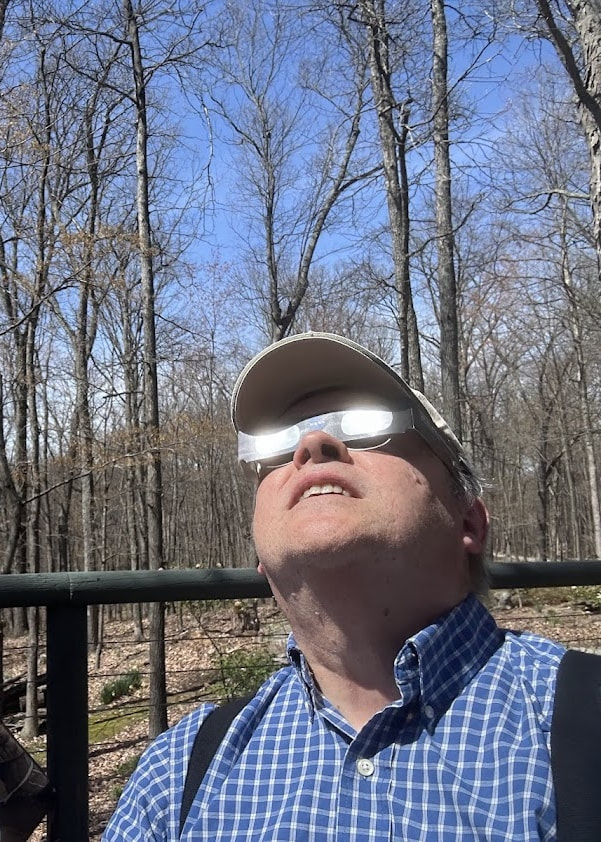



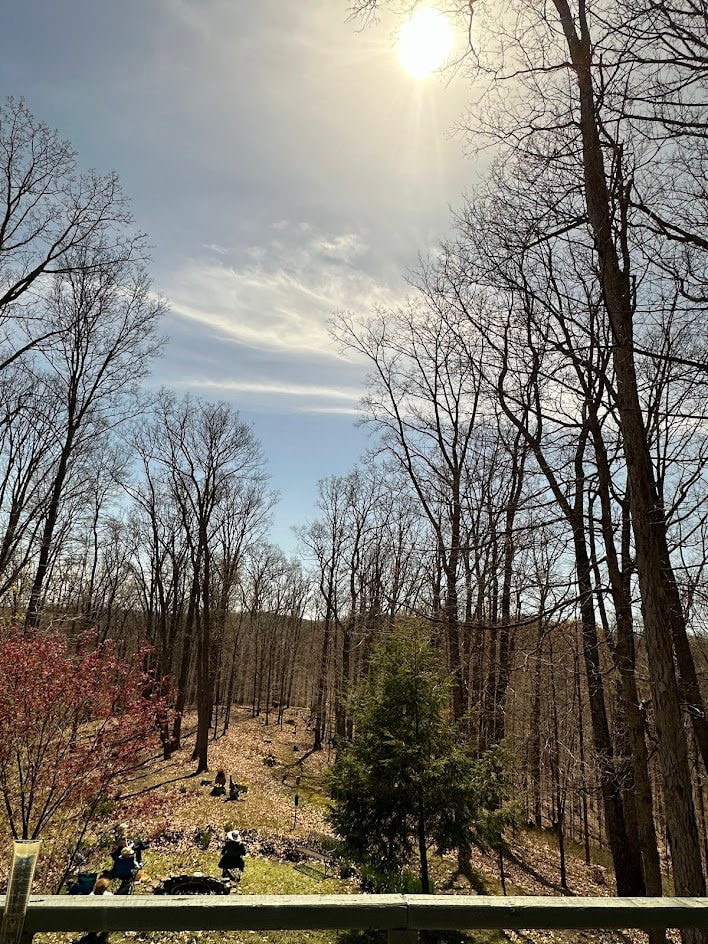

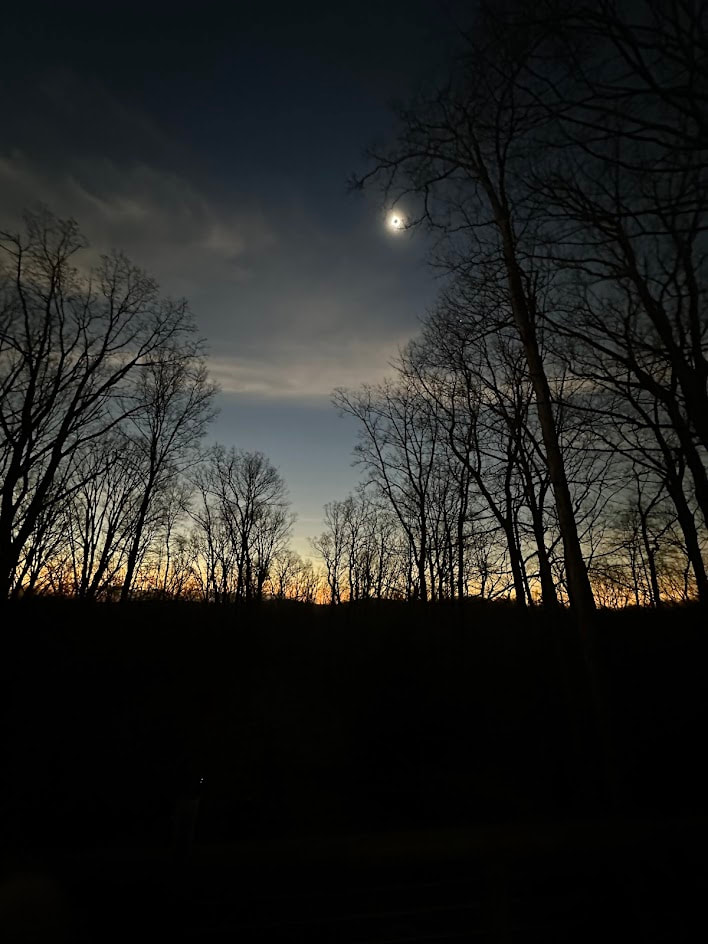
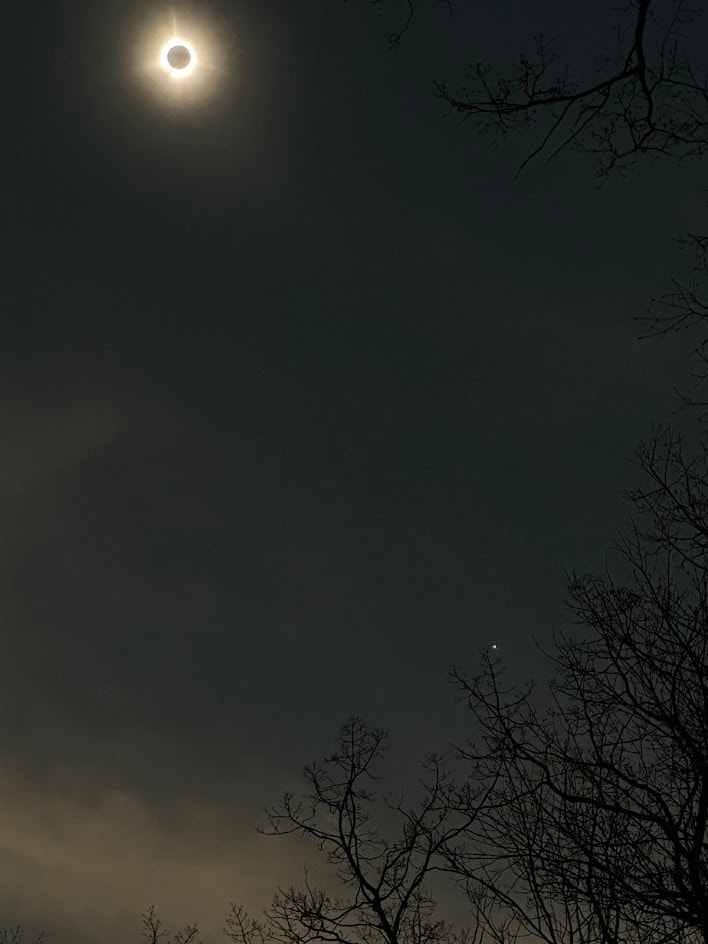




 RSS Feed
RSS Feed